The “Road to Yesterday” Museum, the Christopher Pratt Art Gallery, and Town Archives 2017
Located in the Cable Building National Historic Site, the “Road to Yesterday” Museum, the Christopher Pratt Art Gallery, and town archives are recognized as among of the best in the province.The museum hours for October and November will be: Wednesdays 2pm-4pm. Special tours may be arranged for a fee and by appointment.
In 2016, a special display honours the sacrifice in the Battle of Beaumont Hamel on the 100th Anniversary. The display includes the new quilt by the Pigeon Inlet Quilters Guild to commemorate the battle and a number of items relating to the War, including the uniform of Leonard T. Stick, the first person to enlist as part of the First Five Hundred.
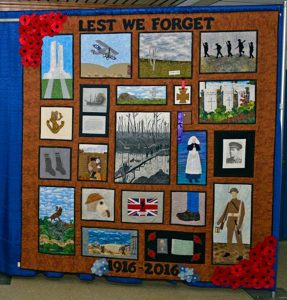
Beaumont Hamel 100 Quilt by Pigeon Inlet Quilters Guild
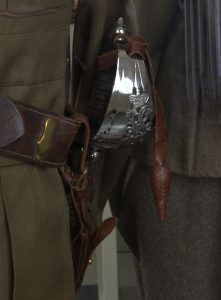
Sword of L.T. Stick – First of the First Five Hundred.
The main focus of the museum is to depict the commercial history and lifestyles of Bay Roberts at the turn of the 20th century. Some 3000 artifacts are currently on display. Additionally, there is an extensive collection of pottery artifacts recovered from Bay Roberts Harbour c.1500s. The exhibits are continuously updated and/or expanded.
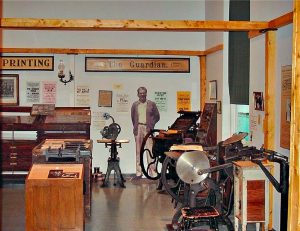
David B. Russell’s printing shop and the old Bay Roberts Guardian newspaper . The printing press from the early 20th century is part of the display. Local visual artist Hilary Cass designed exhibits, including a life size depiction of David Russell.
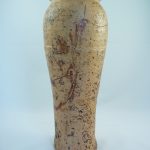
Tall Pot/ Butter Pot – used for souring cream, storing butter, etc. It was found in a 17th century shipwreck in Bay Roberts harbour found in the 1980s near the entrance to the Bay Roberts Harbour.
The Christopher Pratt Art Gallery
The Christopher Pratt Art Gallery is part of the museum. Christopher Pratt donated a permanent collection of his work to the Gallery to honour his late mother Christine Dawe, a native of Bay Roberts. Working with the Society, he has been instrumental in developing an agreement with the Rooms whereby the Gallery will receive art exhibits on a regular seasonal basis. The success of the Gallery has resulted in works of art by artists Helen Parsons Shepherd, Reginald Shepherd, Jennifer Morgan, Scott Goudie, Jean Claude Roy, Gary Kennedy, Cliff George, Florence Pinhorn, and Ian Sparkes being donated to the Society.
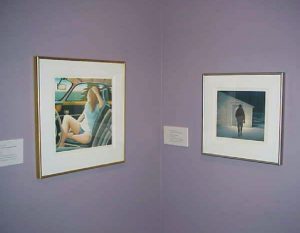
Christopher Pratt Paintings
During the Second World War, the Cable Station was guarded by the Newfoundland Constabulary, the Newfoundland Militia, and Québec soldiers from the Canadian Army. The reason for the security was that in addition to the important communication link between the UK and the US, one of the cables carried a private line between Winston Churchill and Franklin D. Roosevelt.
“By 1913, the current Cable Building in Bay Roberts was built to serve as the main relay between the North American and European networks of Western Union Telegraph. Its establishment was a key component in the company’s international strategy and its architectural design is important corporate evidence of the expansion and dominance of Western Union in Newfoundland. The design of the Cable Building also introduced a new type of telegraph station to Newfoundland as it adopted the Western Union Telegraph corporate model. The architecture demonstrates a functional and specialized layout with rooms dedicated to specific equipment, technical operations, and administration. From its technical design to the connecting cables, the Cable Building was a flagship of telegraph technologies, illustrating Western Union’s important role as an innovative industry leader.” From HistoricPlaces.ca
For information: bayrobertsheritagesociety@hotmail.com, Phone: (709) 786 – 2005 (on site) (709) 786 – 3482 (off season) Website: bayrobertsheritagesociety.com
